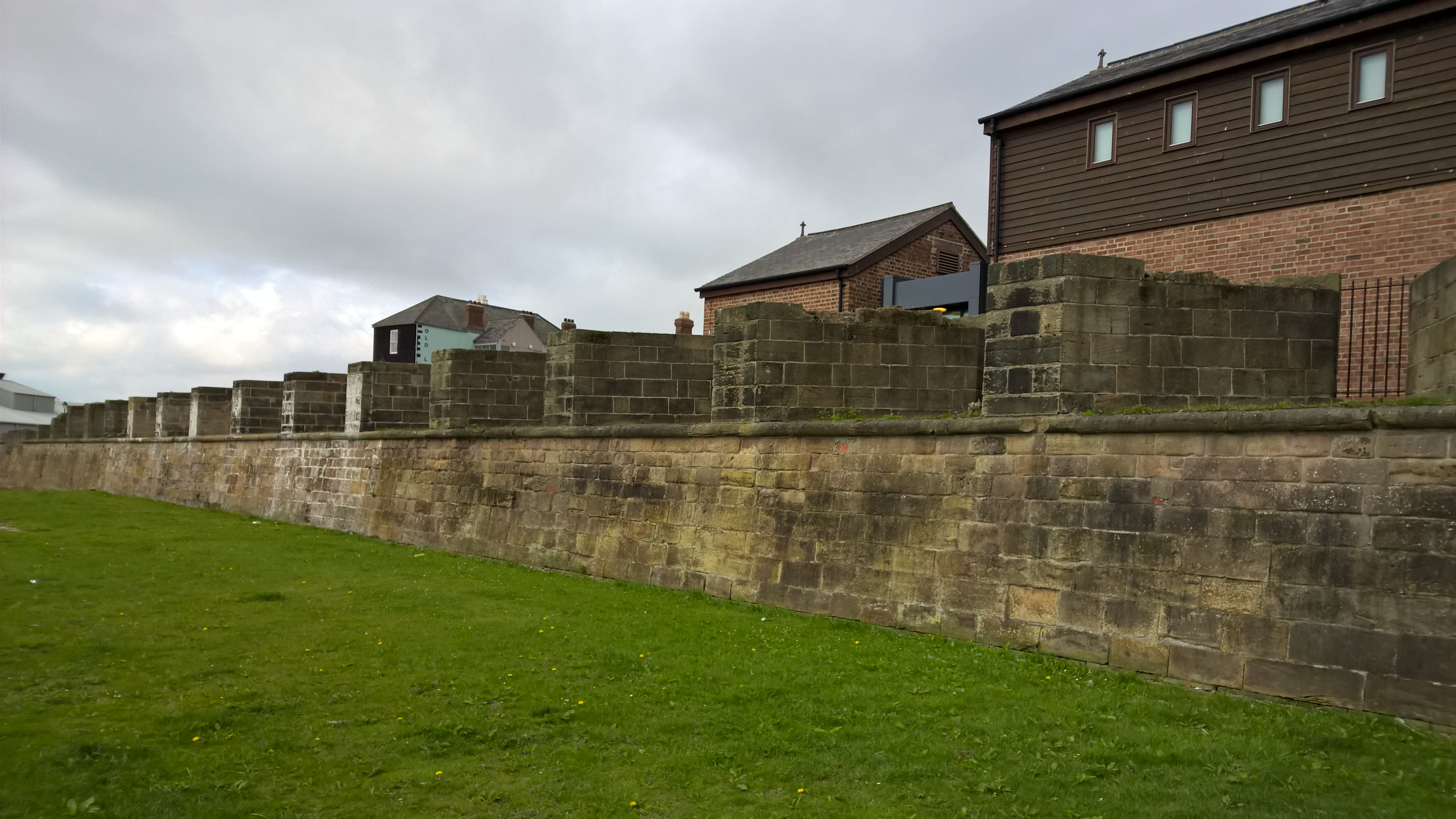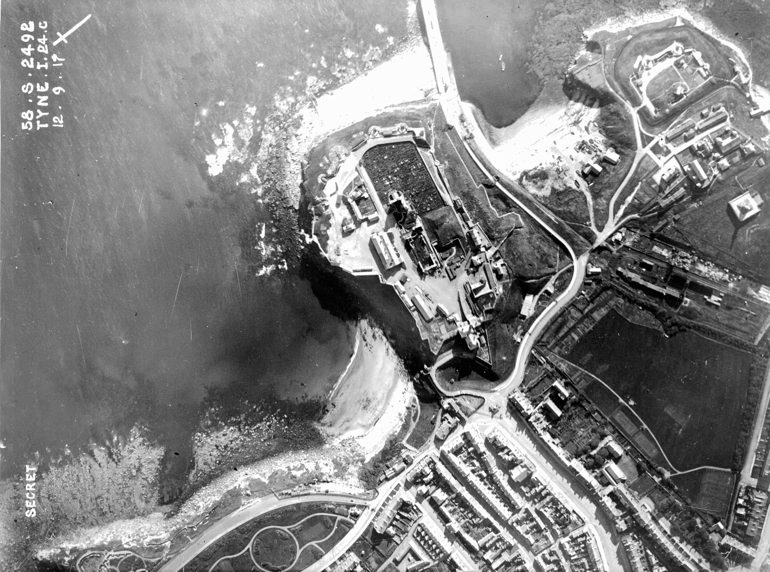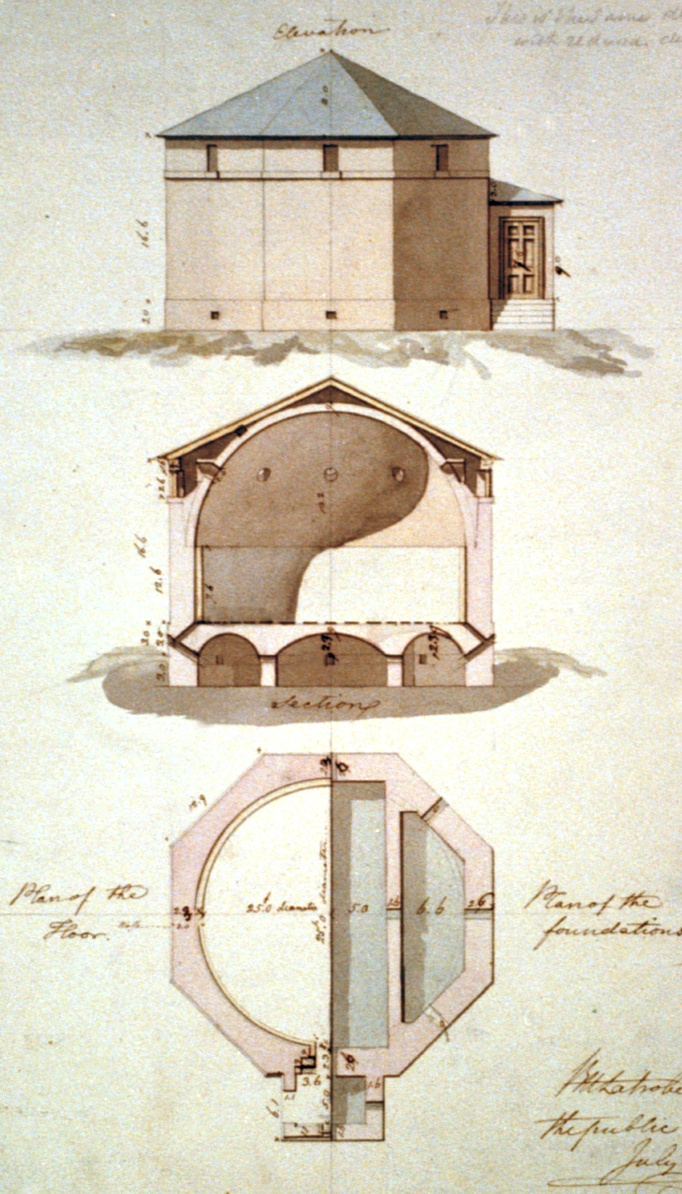|
Clifford's Fort
Clifford's Fort was a defensive gun battery established near the mouth of the Tyne during the Anglo-Dutch Wars in the 17th century. It subsequently served as a submarine mining depot and survives today as a Scheduled Ancient Monument in the historic Fish Quay area of North Shields, Tyne and Wear, in North East England. History 17th century The fort was built in 1672 at the start of the Third Dutch War. An earlier fort had been established on or near the site some thirty years earlier (a somewhat temporary structure consisting of gabions: "baskets filled with sand and mortar, with guns placed between the baskets") but this had been destroyed in action in 1644. (It was paired with a similar fort on the south bank of the river, which had been established by the Marquis of Newcastle in 1642.) Named after Lord Clifford of Chudleigh ('Clifford of the Cabal'), the new fort was built to the designs of Anglo-Swedish engineer Martin Beckman. It consisted of a raised platform, walled ... [...More Info...] [...Related Items...] OR: [Wikipedia] [Google] [Baidu] |
Martin Beckman
Sir Martin Beckman (1634/35–1702) was a draughtsman/painter, Swedish-English colonel, chief engineer and master gunner of England. Life Beckman was born in Stockholm, the son of Melcher Beckman and his wife Chistiana van Benningen. He left Sweden around 1645 to serve Charles I during the English Civil War. His brother, also a military engineer serving Charles, was taken prisoner by the parliament forces in 1644, but after some time on bread and water, was released in a poor state of health. In 1653 he joined the royalist exiles at Middelburg, the bearer of important information from England, and died before the Restoration. Martin Beckman in 1660 petitioned Charles II for the place of royal engineer, formerly enjoyed by his brother, and mentioned that he "was ruined and severely injured by an accident at an explosion in the preparation of fireworks to be shown on the water in the king's honour." He was accordingly employed as an engineer, and his skill in laboratory work led ... [...More Info...] [...Related Items...] OR: [Wikipedia] [Google] [Baidu] |
Naval Mine
A naval mine is a self-contained explosive device placed in water to damage or destroy surface ships or submarines. Unlike depth charges, mines are deposited and left to wait until they are triggered by the approach of, or contact with, any vessel or a particular vessel type, akin to anti-infantry vs. anti-vehicle mines. Naval mines can be used offensively, to hamper enemy shipping movements or lock vessels into a harbour; or defensively, to protect friendly vessels and create "safe" zones. Mines allow the minelaying force commander to concentrate warships or defensive assets in mine-free areas giving the adversary three choices: undertake an expensive and time-consuming minesweeping effort, accept the casualties of challenging the minefield, or use the unmined waters where the greatest concentration of enemy firepower will be encountered. Although international law requires signatory nations to declare mined areas, precise locations remain secret; and non-complying individ ... [...More Info...] [...Related Items...] OR: [Wikipedia] [Google] [Baidu] |
Tyne Division Submarine Miners
Tyne may refer to: __NOTOC__ Geography *River Tyne, England *Port of Tyne, the commercial docks in and around the River Tyne in Tyne and Wear, England *River Tyne, Scotland *River Tyne, a tributary of the South Esk River, Tasmania, Australia People *Edward Tyne (), New Zealand rugby footballer *George Tyne, stage name of American actor and television director Martin Yarus (1917–2008) *Tyne Daly (born 1946), American actress *Tyne O'Connell (born 1960), British author Transportation * ''Tyne'' (1807 ship), initially a West Indiaman *''Tyne'', a New Zealand Company ship that arrived in Wellington in 1841 *Rolls-Royce Tyne, a turboprop engine developed in the 1950s *Tyne, a sea area in the British Shipping Forecast *Tyne-class lifeboats have been operated by the Royal National Lifeboat Institution since 1982 Other uses *, vessels of the British Royal Navy *Reilly Tyne, Marvel Comics superhero Darkdevil See also *Tyne Limestone, a geologic formation in Scotland *Josselyn Van Tyne ... [...More Info...] [...Related Items...] OR: [Wikipedia] [Google] [Baidu] |
Tynemouth
Tynemouth () is a coastal town in the metropolitan borough of North Tyneside, North East England. It is located on the north side of the mouth of the River Tyne, hence its name. It is 8 mi (13 km) east-northeast of Newcastle upon Tyne. It is also home to Tynemouth Priory. Historically part of Northumberland until 1974, the town was a county borough which included the nearby town of North Shields. In 2001, the population of the town was recorded at 17,056. History The headland towering over the mouth of the River Tyne has been settled since the Iron Age. The Romans may have occupied it as a signal station, though it is just north of the Hadrian's Wall frontier (the Roman fort and supply depot of Arbeia stands almost opposite it on the southern headland of the Tyne). In the 7th century a monastery was built in Tynemouth and later fortified. The headland was known as ''Pen Bal Crag''. The monastery was sacked by the Danes in 800, rebuilt, and destroyed again in ... [...More Info...] [...Related Items...] OR: [Wikipedia] [Google] [Baidu] |
Lights Of North Shields
The High and Low Lights of North Shields are decommissioned leading lights in North Shields, Tyne and Wear in the United Kingdom. Two pairs of lights survive: the older pair date from 1727 and were operational until 1810; the newer pair then took over, remaining in use until 1999. All four are listed buildings. They were sometimes known as the Fish Quay High and Low Lights, or (more precisely in terms of their individual locations) as ' Fish Quay (Range front)' and ' Dockwray Square (Range rear)'. The first lighthouses were erected here in the 16th century by the Guild of the Blessed Trinity of Newcastle-upon-Tyne. By following a course which kept the two lights aligned, pilots were able to navigate along the Tyne, avoiding the dangerous Shields Bar and the Black Middens. Earliest lights In 1536, a charter of Henry VIII gave permission to the Guild of the Blessed Trinity (which is known today as Trinity House of Newcastle) to build and embattle a pair of towers on the north b ... [...More Info...] [...Related Items...] OR: [Wikipedia] [Google] [Baidu] |
British Library
The British Library is the national library of the United Kingdom and is one of the largest libraries in the world. It is estimated to contain between 170 and 200 million items from many countries. As a legal deposit library, the British Library receives copies of all books produced in the United Kingdom and Ireland, including a significant proportion of overseas titles distributed in the UK. The Library is a non-departmental public body sponsored by the Department for Digital, Culture, Media and Sport. The British Library is a major research library, with items in many languages and in many formats, both print and digital: books, manuscripts, journals, newspapers, magazines, sound and music recordings, videos, play-scripts, patents, databases, maps, stamps, prints, drawings. The Library's collections include around 14 million books, along with substantial holdings of manuscripts and items dating as far back as 2000 BC. The library maintains a programme for content acquis ... [...More Info...] [...Related Items...] OR: [Wikipedia] [Google] [Baidu] |
Gunpowder Magazine
A gunpowder magazine is a magazine (building) designed to store the explosive gunpowder in wooden barrels for safety. Gunpowder, until superseded, was a universal explosive used in the military and for civil engineering: both applications required storage magazines. Most magazines were purely functional and tended to be in remote and secure locations. They are the successor to the earlier powder towers and powder houses. In Australia Historic magazines were at the following locations, among others: *Jack's Magazine, Saltwater River, Victoria * Goat Island, Sydney *Spectacle Island (Port Jackson) *North Arm Powder Magazine *Dry Creek explosives depot In Canada There are magazines at: *Citadel Hill (Fort George) *Citadel of Quebec, Quebec City, Quebec *Parc de l'Esplanade, Quebec City, QuebecCole Island Esquimalt, British Columbia *Fort Lennox, Île-aux-Noix, Quebec *Fort William Historical Park, Thunder Bay, Ontario *Fort York, Toronto In Ireland Ballincollig, County Cork ... [...More Info...] [...Related Items...] OR: [Wikipedia] [Google] [Baidu] |
Company (military Unit)
A company is a military unit, typically consisting of 80–250 soldiers and usually commanded by a major or a captain. Most companies are formed of three to seven platoons, although the exact number may vary by country, unit type, and structure. Usually several companies are grouped as a battalion or regiment, the latter of which is sometimes formed by several battalions. Occasionally, ''independent'' or ''separate'' companies are organized for special purposes, such as the 1st Air Naval Gunfire Liaison Company or the 3rd Force Reconnaissance Company. These companies are not organic to a battalion or regiment, but rather report directly to a higher level organization such as a Marine Expeditionary Force headquarters (i.e., a corps-level command). Historical background The modern military company became popularized during the reorganization of the Swedish Army in 1631 under King Gustav II Adolph. For administrative purposes, the infantry was divided into companies consist ... [...More Info...] [...Related Items...] OR: [Wikipedia] [Google] [Baidu] |
Barracks
Barracks are usually a group of long buildings built to house military personnel or laborers. The English word originates from the 17th century via French and Italian from an old Spanish word "barraca" ("soldier's tent"), but today barracks are usually permanent buildings for military accommodation. The word may apply to separate housing blocks or to complete complexes, and the plural form often refers to a single structure and may be singular in construction. The main object of barracks is to separate soldiers from the civilian population and reinforce discipline, training, and ''esprit de corps''. They have been called "discipline factories for soldiers". Like industrial factories, some are considered to be shoddy or dull buildings, although others are known for their magnificent architecture such as Collins Barracks in Dublin and others in Paris, Berlin, Madrid, Vienna, or London. From the rough barracks of 19th-century conscript armies, filled with hazing and illness and bare ... [...More Info...] [...Related Items...] OR: [Wikipedia] [Google] [Baidu] |
Guns On Clifford's Fort, North Shields
A gun is a ranged weapon designed to use a shooting tube (gun barrel) to launch projectiles. The projectiles are typically solid, but can also be pressurized liquid (e.g. in water guns/cannons, spray guns for painting or pressure washing, projected water disruptors, and technically also flamethrowers), gas (e.g. light-gas gun) or even charged particles (e.g. plasma gun). Solid projectiles may be free-flying (as with bullets and artillery shells) or tethered (as with Taser guns, spearguns and harpoon guns). A large-caliber gun is also called a ''cannon''. The means of projectile propulsion vary according to designs, but are traditionally effected pneumatically by a high gas pressure contained within the barrel tube, produced either through the rapid exothermic combustion of propellants (as with firearms), or by mechanical compression (as with air guns). The high-pressure gas is introduced behind the projectile, pushing and accelerating it down the length of the tube, imparti ... [...More Info...] [...Related Items...] OR: [Wikipedia] [Google] [Baidu] |
Newcastle-upon-Tyne Trinity House
Newcastle-upon-Tyne Trinity House is a private corporation in Newcastle upon Tyne which emerged in the 16th century as a guild formed by the City's seafarers. For the past 500 years it has occupied premises in Broad Chare on the Newcastle's Quayside, from which it continues to provide a combination of professional and charitable maritime services. It remains one of only three bodies in England authorized for the examination and licensing of deep-sea pilots. Origins The 'Guild of the Blessed Trinity of Newcastle upon Tyne' emerged in the late 15th century, and was formally constituted on 4 January 1505 when it obtained an area of land close to the river on which to build a chapel, meeting room and lodgings for mariners (it was secured by the quit-rent of one red rose, payable annually to a Mr Ralph Hebborn on Midsummer's Day.) Early in its history, the corporation (as it came to be known) was given responsibility for improving the Tyne as a navigable river. For example, the first ... [...More Info...] [...Related Items...] OR: [Wikipedia] [Google] [Baidu] |







